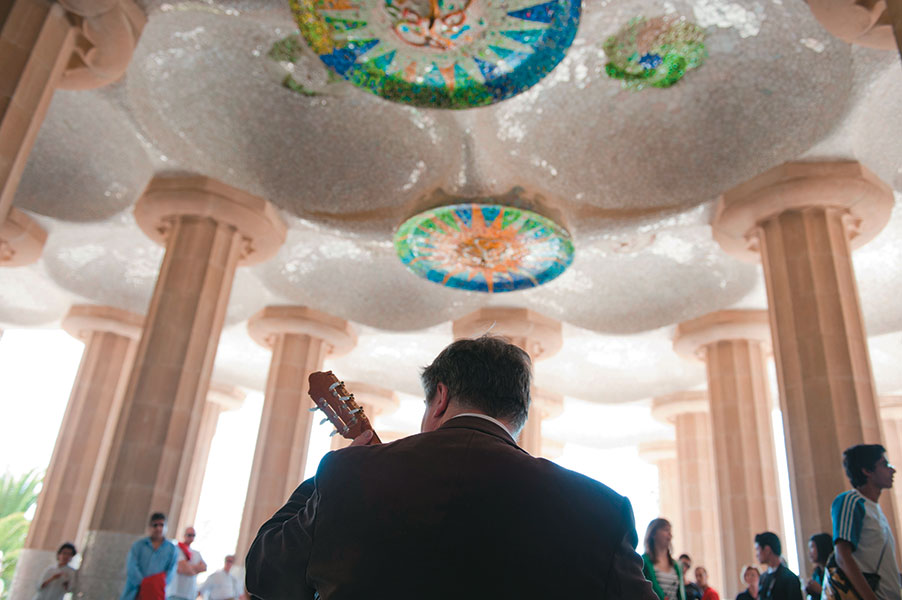 Right from the entrance, you’re captured by the colors that zig-zag across 42 acres of chiseled vegetation and stone. As you sit on the famous Serpentine Bench—with its row of concave seats said to be formed by the park laborers taking a break in wet clay—you hear the pitch-perfect notes of a flamenco guitar. Following the music, you find a young man casually dressed, hunched over an instrument made of rosewood, strumming melodies as old and as celebrated as his surroundings.
Right from the entrance, you’re captured by the colors that zig-zag across 42 acres of chiseled vegetation and stone. As you sit on the famous Serpentine Bench—with its row of concave seats said to be formed by the park laborers taking a break in wet clay—you hear the pitch-perfect notes of a flamenco guitar. Following the music, you find a young man casually dressed, hunched over an instrument made of rosewood, strumming melodies as old and as celebrated as his surroundings.
Flamenco, the folk art music popularized by gypsy communities, moved into mainstream street art during the latter half of the 19th century at the same time Antoni Gaudi, a young, eccentric Spanish architect and the future pioneer of Catalan Modernism, launched his design career. Now in the 21st century, the worlds of Spanish music and architecture merge at Parc Güell, a UNESCO World Heritage Site that gives visitors an authentic taste of Spanish culture.
Named after Count Eusebi Güell, a patron of Gaudi and a Barcelona native, Parc Güell is ambitious in scope, grandeur, and imagination. This bejeweled walled garden rests on the hill of El Carmel in Barcelona’s Gracia district. Begin at the park entrance near a sweeping white-tiled staircase and then stroll through a fairytale land undulating with colorful mosaics, viaducts, and sculptures, including a dragon fountain. Built over a 14-year period, the park is a favorite of artists and musicians who frequently paint or perform below the central terrace, which is the heart of the park and a heavily trafficked spot that serves as an ideal stage. Musicians enjoy the shade in what is commonly known as the Hall of the Hundred Columns (though truthfully, there are only about 86), which boasts opera house-quality acoustics.
 Your students are probably more accustomed to listening to music on their smart phones, but to hear a musician bring traditional folk songs to life without technological embellishment at one of Spain’s most celebrated architectural achievements offers a truly memorable experience. The music also perfectly echoes the beautiful view, where palm trees sway and a bright blue sky disappears into the Mediterranean Sea.
Your students are probably more accustomed to listening to music on their smart phones, but to hear a musician bring traditional folk songs to life without technological embellishment at one of Spain’s most celebrated architectural achievements offers a truly memorable experience. The music also perfectly echoes the beautiful view, where palm trees sway and a bright blue sky disappears into the Mediterranean Sea.
At Parc Güell, art begets art. Despite attracting millions of visitors every year, it remains a landscape masterpiece that has gracefully weathered both time and tourism. Gaudi once said of his work: “Color in certain places has the great value of making the outlines and structural planes seem more energetic.” The energy at Parc Güell is palpable and will remain with you long after the park closes at dusk and the guitar notes fade.
Explore our most popular tour that includes this activity: explorica.com/isp

